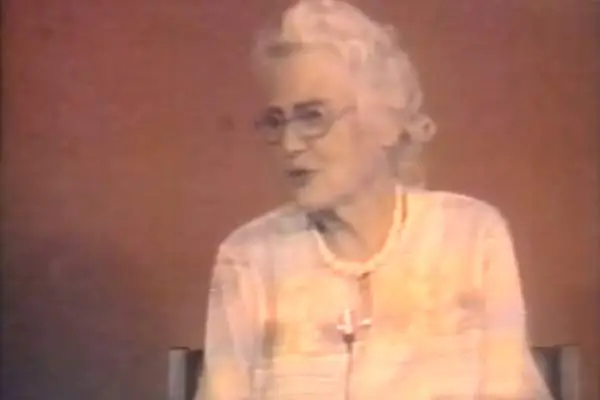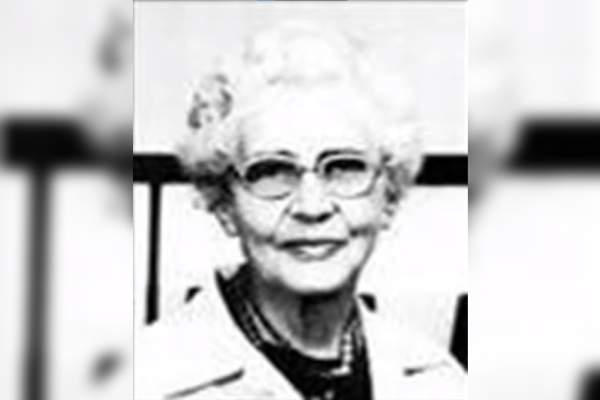Dr. Helen Brooke Taussig Biography: Pioneering Hearts, Transforming Lives

Helen Brooke Taussig Biography. Image Source: Social Media.
- Full Name Helen Brooke Taussig
- Age 87 yrs
- Birth Date May 24, 1898
- Country America
- Relationship Status Not Confirmed
- Nationality USA
- Profession Cardiologist
- Awards and honors Albert Lasker award
- Education Johns Hopkins School of Medicine
- City Massachusetts
- Death Date May 20, 1986
Dr. Helen Brooke Taussig was a pioneering physician and researcher who made remarkable contributions to the field of pediatric cardiology. Despite facing gender discrimination, personal challenges, and a medical culture not ready for women, Taussig’s brilliance and tenacity led to groundbreaking discoveries that transformed the lives of countless children and families. Her work on Blue Baby syndrome and the development of the Blalock-Taussig shunt launched the modern era of pediatric cardiac surgery, while her advocacy against thalidomide helped prevent a major public health disaster.
In this blog, we will explore the life and legacy of this remarkable woman, whose pioneering spirit and unwavering commitment to improving the lives of others continue to inspire and inform the work of physicians and researchers in the field of pediatric cardiology today. Join us as we delve into Dr. Helen Brooke Taussig biography, a true trailblazer in medicine.
Early Life and Education: Overcoming Challenges to Pursue a Career in Medicine
Helen Brooke Taussig was born on May 24, 1898, in Cambridge, Massachusetts, into a family of distinguished scholars and educators. Her father, Frank William Taussig, was a Harvard University professor of economics, and her mother, Edith Thomas Guild, was a student at Radcliffe College. She had a major in zoology and other natural sciences.
Helen was one of 4 children of the couple. There were 3 siblings of Helen: Catherine Crombie, William Guild, and Mary Guild.
Dr. Helen Brooke Taussig’s life was shaped by a series of events that would ultimately lead her to become one of the most influential figures in the field of pediatric cardiology. One of the most significant of these events was the death of her mother when she was only 11 years old. This tragic loss had a profound impact on Taussig, shaping her character and inspiring her to pursue a career in medicine.
Taussig’s grandfather, who was a physician with a strong interest in biology and zoology, may also have influenced her decision to become a doctor. His love for science and his passion for helping others may have inspired Taussig to pursue a career in medicine, despite the challenges that she would face as a woman in a male-dominated field.
Growing up, Taussig struggled with dyslexia, which made reading and writing difficult for her. Despite this, she was determined to pursue a career in medicine. When she applied to Harvard Medical School, she was told that women were not allowed to earn degrees there. Undeterred, she enrolled in Boston University’s medical school to study anatomy and histology.
Taussig transferred to Johns Hopkins University School of Medicine, where she was one of only a few women in her class. Despite facing gender discrimination, she excelled in her studies and graduated with her medical degree in 1927. She was offered an internship in pediatrics, which ultimately led her to her life’s work in pediatric cardiology.
Taussig’s personal struggles with dyslexia and gender discrimination made her a fierce advocate for children with congenital heart defects. She understood firsthand the importance of providing equal opportunities and access to healthcare for all, regardless of their social status or gender. Her determination and passion for medicine led her to become a pioneering figure in the field of pediatric cardiology, transforming the lives of countless children and families.
The Blue Baby Syndrome: Taussig’s Groundbreaking Research and the Development of the Blalock-Taussig Shunt
As the physician-in-charge of the Cardiac Clinic at the Harriet Lane Home of Johns Hopkins University in the 1930s, Dr. Taussig saw many children with congenital heart defects. Among the most devastating was a condition known as Blue Baby syndrome, in which infants were born with a heart defect that prevented enough oxygen from reaching their blood, causing them to turn blue.
Taussig became determined to find a way to help these children, and in the early 1940s, she began working with Dr. Alfred Blalock, a surgeon at Johns Hopkins, to develop a surgical procedure that would allow more oxygenated blood to reach the body’s tissues. Together, they developed the Blalock-Taussig shunt, a surgical technique used to create a pathway for blood to go from the arterial circulation to the lungs.
The first successful Blalock-Taussig shunt surgery was performed on a child in 1944, and the procedure soon became the standard treatment for Blue Baby syndrome. The success of the Blalock-Taussig shunt marked a turning point in the treatment of congenital heart defects and launched the modern era of pediatric cardiac surgery.
Taussig’s groundbreaking research on Blue Baby syndrome and the development of the Blalock-Taussig shunt revolutionized the field of pediatric cardiology, giving hope to countless families of children with previously untreatable conditions. Today, the Blalock-Taussig shunt remains one of the most important surgical procedures in pediatric cardiac surgery, and Taussig’s legacy continues to inspire and inform the work of physicians and researchers in the field.
Thalidomide and Advocacy: Taussig’s Role in Preventing a Major Public Health Disaster
In the early 1960s, reports began to emerge from Europe of a cluster of birth defects in children born to mothers who had taken thalidomide, a sedative that was widely prescribed for morning sickness during pregnancy. Dr. Taussig, who had already established herself as a leading figure in the field of pediatric cardiology, was deeply concerned by these reports and decided to investigate.
In 1962, Taussig traveled to Europe to examine affected babies and learn about their medical history. She confirmed that thalidomide was indeed the cause of the birth defects, which included limb deformities, heart defects, and other serious abnormalities. Taussig returned to the United States and began to speak out against the use of thalidomide, testifying before Congress and writing articles for medical journals.
Taussig’s advocacy was instrumental in preventing a major public health disaster in the United States. Although thalidomide had already been approved for use in Europe and many other countries, the FDA refused to approve the drug in the US due in large part to Taussig’s efforts. Her work helped raise awareness of the dangers of untested medications and the need for proper drug labeling and monitoring.
Taussig’s advocacy on behalf of the victims of thalidomide demonstrated her unwavering commitment to the welfare of children and families, and her tireless efforts helped prevent a major public health crisis in the United States. Her work on thalidomide also highlighted the importance of proper drug testing and regulation, a legacy that continues to inform medical research and public health policy today.
ALSO READ: Know about Ari Melber’s Biography.
Pioneering Woman in Medicine: Taussig’s Achievements and Recognition
Dr. Helen Brooke Taussig was a trailblazer for women in medicine, breaking down barriers and achieving many “firsts” throughout her career. In 1945, she became the first female full professor of pediatrics at Johns Hopkins University School of Medicine, and in 1965, she became the first female president of the American Heart Association.
Taussig’s pioneering work in pediatric cardiology was recognized with numerous awards and honors. In 1954, she and Dr. Alfred Blalock were awarded the prestigious Lasker Award for their groundbreaking research on congenital heart defects and the development of the Blalock-Taussig shunt. Taussig was also awarded the Presidential Medal of Freedom in 1964, the highest civilian honor in the United States.
Despite facing personal challenges such as dyslexia and deafness, Taussig’s brilliance and perseverance helped pave the way for future generations of women in medicine. Her achievements continue to inspire and serve as a reminder of the important contributions that women can make in the field of medicine and in society as a whole.
Legacy: Taussig’s Lasting Impact on Pediatric Cardiology and Medical Research
Dr. Helen Brooke Taussig’s contributions to the field of pediatric cardiology were groundbreaking and transformative. Her work on Blue Baby syndrome and the development of the Blalock-Taussig shunt launched the modern era of pediatric cardiac surgery, saving countless lives and improving the quality of life for children with congenital heart defects.
Taussig’s advocacy against thalidomide helped prevent a major public health disaster, and her efforts to raise awareness of the importance of proper drug testing and regulation continue to inform medical research and public health policy today.
In addition to her medical achievements, Taussig’s legacy also includes her role as a mentor to generations of physicians and researchers. She inspired many young people to pursue careers in medicine, and her work continues to inform and inspire the work of pediatric cardiologists and researchers around the world.

Helen Brooke Taussig Biography. Image Source: Social Media.
Dr. Helen Brooke Taussig’s lasting impact on pediatric cardiology and medical research serves as a testament to the power of determination, perseverance, and a commitment to improving the lives of others.
Similarly, you would love to explore Jordan Mailata‘s biography.
Lessons from Taussig’s Life: Inspiration for Future Generations of Physicians and Scientists
Dr. Helen Brooke Taussig worked tirelessly throughout her life to improve the lives of children with congenital heart defects and other medical conditions. Even as she faced personal challenges such as dyslexia and deafness, she refused to let anything stand in the way of her pursuit of knowledge and her dedication to helping others.
Dr. Helen Brooke Taussig biography is a testament of her unwavering commitment to her work. She continued until her death in 1986. Her passion for medicine and her determination to make a difference in the world never wavered.
Taussig’s legacy continues to inspire and inform the work of pediatric cardiologists and medical researchers today. Her groundbreaking research on “blue baby” syndrome and the development of the Blalock-Taussig shunt have saved countless lives and transformed the field of pediatric cardiology forever. Her advocacy work on behalf of the victims of thalidomide helped prevent a major public health disaster and continues to inform medical research and public health policy today.
Dr. Helen Brooke Taussig was a true champion for children’s health and a beacon of hope for future generations of physicians and researchers. Her life and work serve as a testament to the power of perseverance, empathy, and a commitment to making the world a better place. Her impact on pediatric cardiology and medical research will continue to inspire and inform the work of those who follow in her footsteps.
Did you notice an error ?
Please help us make corrections by submitting a suggestion. Your help is greatly appreciated!











